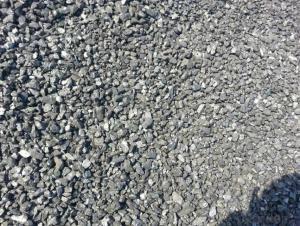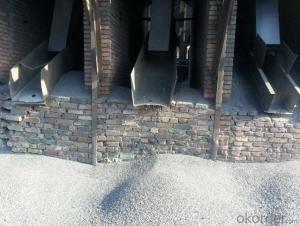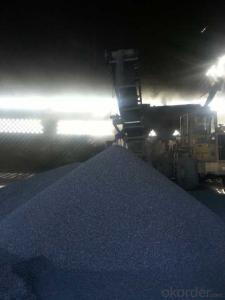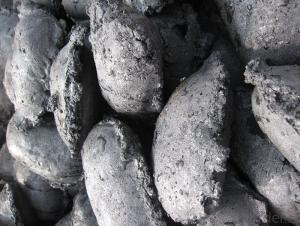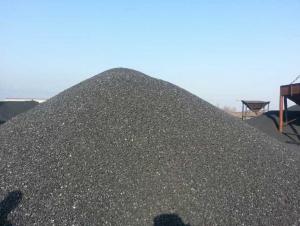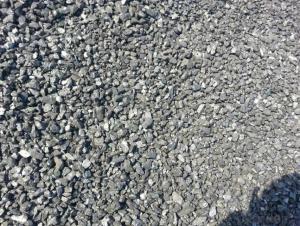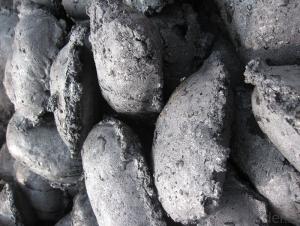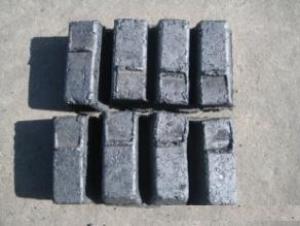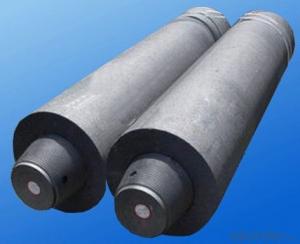Injection Carbon With Low Sulphur And Good Quality
- Loading Port:
- Tianjin
- Payment Terms:
- TT or LC
- Min Order Qty:
- 20 m.t.
- Supply Capability:
- 3000 m.t./month
OKorder Service Pledge
OKorder Financial Service
You Might Also Like
Product Introduction:
It is Calcined anthracite, in steelmaking, some small size are called Injection Carbon.
Calcined Anthracite is produced using the best Anthracite-Taixi Anthracite with low S and P, It is widely used in steel making and casting.
Specification
PARAMETER UNIT GUARANTEE VALUE | |||||
F.C.% | 95MIN | 94MIN | 93MIN | 92MIN | 90MIN |
ASH % | 4MAX | 5MAX | 6 MAX | 6.5MAX | 8.5MAX |
V.M.% | 1 MAX | 1MAX | 1.0MAX | 1.5MAX | 1.5MAX |
SULFUR % | 0.3MAX | 0.3MAX | 0.3MAX | 0.35MAX | 0.35MAX |
MOISTURE % | 0.5MAX | 0.5MAX | 0.5MAX | 0.5MAX | 0.5MAX |
The products can be provided according to the customer's special demands.
Packing
1.Big bag: 500kg/600kg PP Bag.(activated carbon)
2.Small bag: 25kg kraft bag or PP Bag.
3.According to customer's requirements
Advantage of Our Injection Carbon:
--Low ash and sulfur contain
--Reduce needs for expensive melt additives.
--Increased dissolution rate over anthracite blends
--Reduces slagging time, labor and disposal cost
--Extends the life of the furnace lining, reduce maintenance cost and increase production yield.
Pictures of Injection carbon:
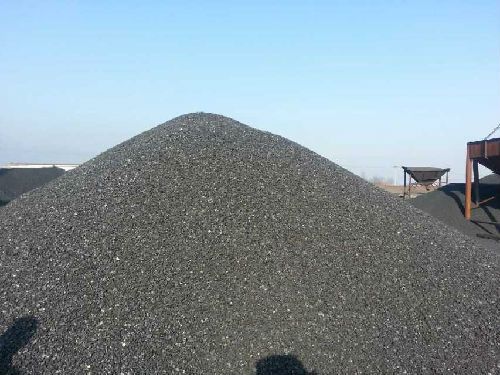
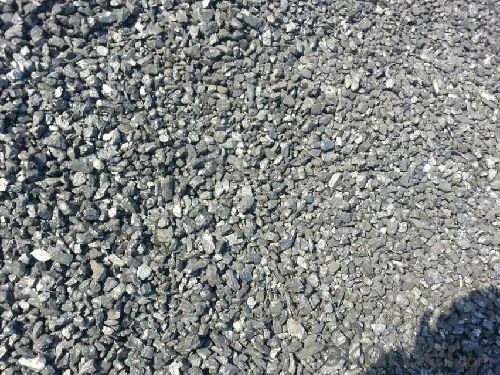
- Q: What are the impacts of carbon emissions on the stability of mountains?
- Carbon emissions have significant impacts on the stability of mountains. One of the most prominent impacts is the acceleration of global warming, which leads to the melting of glaciers and permafrost. As mountains are home to many glaciers, the increase in temperature causes these glaciers to melt at an alarming rate. This melting can result in the destabilization of mountains, leading to increased landslide and rockfall activity. Furthermore, carbon emissions contribute to the acidification of rainwater. Acid rain can erode the rocks and soil in mountains, weakening their stability. This erosion can lead to slope instability, making mountains more susceptible to landslides and other forms of mass movements. Additionally, carbon emissions contribute to changes in precipitation patterns. Mountain ecosystems heavily rely on a delicate balance of rainfall and snowfall. However, climate change caused by carbon emissions disrupts this balance, leading to altered precipitation patterns. This can result in increased water runoff and a reduction in snowpack, both of which contribute to mountain destabilization. Moreover, carbon emissions have indirect impacts on mountain stability through changes in vegetation patterns. As temperatures rise, plant species may migrate to higher altitudes in search of cooler climates. This can result in the loss of vegetation in lower elevation areas, which play a crucial role in stabilizing slopes and preventing erosion. The absence of plant cover leads to increased soil erosion, leaving mountains more vulnerable to landslides and other erosive processes. In conclusion, carbon emissions have detrimental impacts on the stability of mountains. The acceleration of global warming, acidification of rainwater, altered precipitation patterns, and changes in vegetation patterns all contribute to the destabilization of mountains. It is crucial to reduce carbon emissions and mitigate climate change to protect and preserve these majestic natural formations.
- Q: How is carbon involved in the metabolism of carbohydrates, proteins, and fats?
- Carbon is a fundamental element involved in the metabolism of carbohydrates, proteins, and fats. In all three macronutrients, carbon atoms play a crucial role in the formation of their molecular structures. In carbohydrates, carbon is present in the form of glucose, which is the primary source of energy for the body. Through a process called glycolysis, glucose is broken down into smaller molecules, generating ATP (adenosine triphosphate) for cellular energy. The carbon atoms in glucose are rearranged and converted into intermediate compounds that are further used in other metabolic pathways. Proteins, on the other hand, are complex molecules composed of amino acids, each containing a carbon atom. During protein metabolism, carbon atoms participate in various reactions, such as deamination and transamination, which allow for the synthesis of new proteins or the breakdown of existing ones. Carbon atoms also contribute to the formation of peptide bonds that link amino acids together, forming the backbone of proteins. In the metabolism of fats or lipids, carbon is predominantly found in the fatty acid chains. These carbon chains provide a high-energy fuel source, as they can be broken down through a process called beta-oxidation. Carbon atoms from fatty acids are sequentially cleaved, producing acetyl-CoA, which enters the citric acid cycle (also known as the Krebs cycle) to generate ATP. Additionally, carbon atoms from fatty acids can be used for the synthesis of other molecules, such as cholesterol and hormones. Overall, carbon is an essential component in the metabolism of carbohydrates, proteins, and fats. Its involvement in these metabolic processes allows for the production of energy, the synthesis and breakdown of essential molecules, and the regulation of various physiological functions.
- Q: How does carbon contribute to air pollution?
- Carbon contributes to air pollution primarily through the emission of carbon dioxide (CO2) and carbon monoxide (CO) into the atmosphere. The burning of fossil fuels, such as coal, oil, and natural gas, releases large amounts of carbon dioxide, a greenhouse gas that contributes to global warming and climate change. This increased level of CO2 in the atmosphere traps heat, leading to the greenhouse effect and subsequent rise in global temperatures. Additionally, incomplete combustion of fossil fuels and biomass can release carbon monoxide, a toxic gas that can have detrimental effects on human health. Carbon monoxide is particularly dangerous as it binds to hemoglobin in the blood, reducing its oxygen-carrying capacity and potentially causing asphyxiation. Furthermore, carbon-containing compounds such as volatile organic compounds (VOCs) contribute to air pollution. VOCs are released from various sources, including industrial processes, vehicle emissions, and the use of solvents in paints and cleaning products. These compounds react with other pollutants in the atmosphere to form ground-level ozone, a major component of smog. Ozone can cause respiratory problems, eye irritation, and other health issues when inhaled. In conclusion, carbon contributes to air pollution through the emission of carbon dioxide, carbon monoxide, and volatile organic compounds. These pollutants have significant impacts on climate change, human health, and the overall quality of the air we breathe. It is crucial to reduce carbon emissions and adopt sustainable practices to mitigate the negative effects of carbon on air pollution.
- Q: How does carbon dioxide affect ocean acidity?
- Carbon dioxide affects ocean acidity by increasing the concentration of carbonic acid in the water. When carbon dioxide dissolves in seawater, it reacts with water molecules to form carbonic acid, which then dissociates into hydrogen ions and bicarbonate ions. The increase in hydrogen ions leads to a decrease in pH, making the ocean more acidic. This process is known as ocean acidification and can have harmful effects on marine life, particularly on organisms with calcium carbonate shells or skeletons, as the increased acidity can make it harder for them to build and maintain their structures.
- Q: How does carbon dioxide affect waste management processes?
- Carbon dioxide can affect waste management processes by contributing to the greenhouse effect and climate change. Increased levels of carbon dioxide in the atmosphere can lead to higher temperatures, which can impact waste decomposition rates, emission of greenhouse gases from landfills, and the overall efficiency of waste treatment technologies. Additionally, carbon dioxide emissions from waste incineration can contribute to the overall carbon footprint of waste management processes.
- Q: How does carbon impact the energy balance of the Earth?
- Carbon impacts the energy balance of the Earth by trapping heat in the atmosphere through the greenhouse effect. This leads to an increase in global temperatures, known as global warming, and disrupts the natural equilibrium of energy flow on the planet.
- Q: How does carbon impact the prevalence of heatwaves?
- Carbon impacts the prevalence of heatwaves by contributing to the greenhouse effect. When carbon dioxide and other greenhouse gases are released into the atmosphere, they trap heat from the sun, leading to a rise in global temperatures. This increase in temperature makes heatwaves more frequent, intense, and longer-lasting, posing significant risks to human health, ecosystems, and infrastructure.
- Q: How does carbon affect the formation of blizzards?
- Carbon does not directly affect the formation of blizzards. Blizzards are primarily caused by the collision of warm and cold air masses, resulting in heavy snowfall and strong winds. However, carbon emissions and climate change can influence weather patterns, potentially leading to more intense or frequent blizzards in certain regions due to alterations in atmospheric conditions.
- Q: How does carbon affect the acidity of oceans?
- Carbon dioxide (CO2) dissolves in seawater to form carbonic acid (H2CO3), which increases the concentration of hydrogen ions (H+) in the water, leading to ocean acidification. This decrease in pH affects marine life by hindering the ability of shell-forming organisms to build and maintain their shells, as well as impacting other vital biological processes.
Send your message to us
Injection Carbon With Low Sulphur And Good Quality
- Loading Port:
- Tianjin
- Payment Terms:
- TT or LC
- Min Order Qty:
- 20 m.t.
- Supply Capability:
- 3000 m.t./month
OKorder Service Pledge
OKorder Financial Service
Similar products
Hot products
Hot Searches
